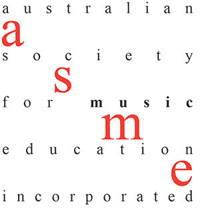The way you measure a society’s soul is by the way that it treats its children.
Nelson Mandela
Issue No. 104 – 19th April 2011
HAPPY EASTER!!!

The Traditions of Easter
There seems to be a lot of nonsense abounding in our ‘politically correct’ educational circles regarding the teaching of religious (read ‘Christian’) festivals such as Easter and Christmas. If you live in a normally Christian country, such as Australia, New Zealand, the UK, the USA and many others, you need to know the stories behind the celebrations. After all, you enjoy the public holiday that these festivals provide so you have a right to know the origins. More importantly, the children in your care have the right to know the origins. They may not come from Christian backgrounds; in fact they may well come from atheistic backgrounds and that’s fine too. Educating them about the festivals in their country has nothing to do with propagandising or proselytising, but rather is simply about education. Easter is a religious festival so why be intimidated by that fact? When we are visitors to another country we want to know the protocols associated with their various religious ceremonies so as not to offend. That is not to say that anyone is trying to convert us to another faith but simply that we want to respect the faiths of other people. Likewise, when people come to English speaking countries they wish to learn about the various religious festivals that are celebrated in our countries, irrespective of anyone’s particular religious point of view or lack thereof. There is an enormous gulf between preaching and simply educating. I recommend you stick to the latter.
I have indicated below some activities you might like to share with the children in your care – two books, a song and a recipe – but above all, you might like to tell them about some of the Easter traditions and even incorporate some of them into your last week before the Easter break, that is, in case there’s any chance you are not already doing so. Here’s an excerpt (paraphrased) from the ‘achieve success’ website.
‘Along with Easter eggs, the Easter Bunny is one of the best known Easter symbols. The bunny as a symbol of Easter appears to have its origins in Germany in the 1500s. The first edible bunnies were made in Germany around 1810. The Easter Bunny was introduced to America in the late 1700s and apart from Christmas, was the second most favourite time of the year for children.
Rabbits are a reminder of spring and new life. They were the favourite animal of the spring goddess Eastre. In Australia, Easter is celebrated in the autumn. In Australia there has been a commercialised push to sell the Easter Bunny. Many Australians prefer the bilby as the symbol for Easter as it is native to Australia, it is an endangered species and it looks not unlike a rabbit. Furthermore, the rabbit has destroyed land, crops, vegetation and burrows of other native Australian species.’
The bunny is supposed to go around the garden leaving ‘eggs’ for children to find. This is a delightful practice and one which all children love to take part in. Children would create baskets and bonnets in order to collect the eggs they were bound to find. Consequently, when all these wonderful baskets and bonnets were created, a ‘parade’ needed to be arranged in order for everyone to see the children’s handiwork. Hard-boiled and highly decorated hens’ eggs can also be hidden or just used as a craft activity as it is a centuries old tradition, long before the advent of chocolate or sugar eggs.
Hot Cross Buns are more to do with Good Friday than Easter Day because they remind Christians that Jesus died on the cross (hence the cross on the bun) on Good Friday. Three days later, on Easter Sunday, he ‘rose again from the dead’, hence the celebration of new life, corresponding with springtime and rebirth, epitomised by the chickens and the rabbits. The Christians were great at taking over already existing pagan customs and making them their own. Easter is no exception. How much of the Christian Easter story you wish to tell will depend on the age of your children and their ability to comprehend. Meantime, the traditions associated with Easter are delightful. There are many wonderful craft activities you can do, not to mention dances and songs. Don’t deny the children in your care the opportunity to take part because someone may consider it ‘too religious’. As with any celebration associated with new life, there needs to be feasting, especially on sweet things, dressing up, making costumes, singing and dancing. Anyone suggesting such things are inappropriate is a wowser.
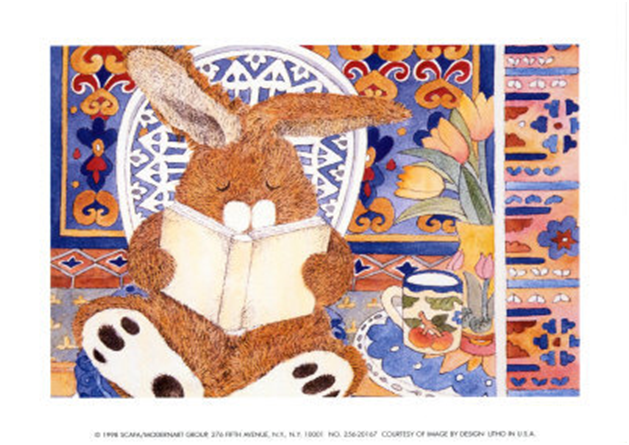
Easter Reading – Great book suggestions include:
The Story of the Easter Bunny by Katherine Tegen, Illustrated by Sally Anne Lambert. Publisher: Harper Collins ISBN: 0060507128
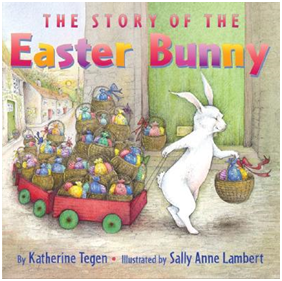
The Easter Chicken by Lisa Funari-Willever, Illustrated by Lorraine Funari, Published by: Franklin Mason Press
ISBN: 0967922763
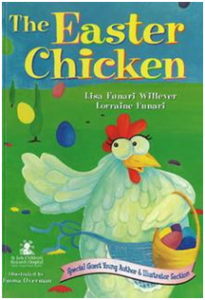
Easter Song
Hot cross buns, hot cross buns
One a penny, two a penny, hot cross buns.
If you have no daughters give them to your sons
One a penny, two a penny, hot cross buns!
This would be great sung as a round.
If you are looking for some more great songs for Easter (well it may be a little late now but good to keep in mind for next year), you can purchase Donna Marwick O’Brien’s Kids’ Songs and Actalongs which contains a great Easter song (book and CD $44.00) or Feeling the Beat by Kids Music Company which also has a great Easter song (CD $27.00) from the Kidz-Fiz-Biz website (www.kidzfizbiz.com).
Easter Cooking – Golden Nests
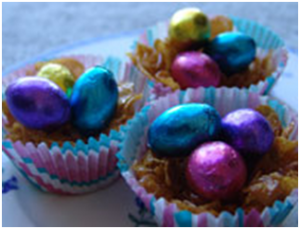
1/3 cup sugar
1 tablespoon honey
3 tablespoons butter
4 cups cornflakes
chocolate Easter eggs
12 muffin sized paper cases
Method
Place paper cases in a muffin tray. Melt butter, sugar and honey together in a saucepan. Remove from heat when it gets frothy. Pour mix into bowl with the cornflakes and stir until combined. Place a large spoonful into each paper case, pushing the mixture with the back of the spoon to the edges to form a hollow. Bake in a slow oven 10-15 minutes. Cool. Arrange eggs in each nest. (From www.achievesuccess.com.au/easter/easter_recipes.htm)
About The Author
Marlene Rattigan B.A., Dip. Ed. (ECS), CELTA
Marlene Rattigan is an Early Childhood teacher, a teacher of English as a Second Language, and from 1987-2000 was a nationally accredited fitness leader. Her background is in music education. A keen interest in motor development in children led to the creation of Kidz-Fiz-Biz which she taught successfully for 13 years. Marlene also conducts workshops for children, teachers and parents at schools, in the community and at festivals. She has produced teaching manuals complete with audio CDs which are an extension of her ‘Kidz-Fiz-Biz’ program.
Kidz-Fiz-Biz
PO Box 6894, East Perth WA 6892, Australia
T: +61 8 9325 1204 M: +61 (0) 410 64 2781 E: info@kidzfizbiz.com
Enjoying Kidz Newz?
Perhaps a friend or colleague would enjoy it too! Add their contact address and click “Forward”. (Be sure to include this entire message, including the subscription details) By doing this you will help us grow.
Looking for lots of ideas? Visit the Kidz Newz archive where you will find back issues of Kidz Newz.
Like us on Facebook, follow us on Twitter, subscribe to our blog for more interesting information, articles and discussions or connect with Marlene on Linked In.
Until next time … continue being a legend in your classroom.
Marlene Rattigan, Editor
Kidz Newz
{tag_subscribe} if you would like to stop receiving these advices.





